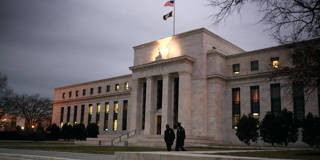As was true during World War II, the US Federal Reserve needs to buy Treasury debt on a sustained basis to prevent crippling interest-rate spikes. This “new normal” is a clear warning that the US must address new generation-spanning challenges such as excessive government debt with a wartime sense of urgency.
ALEXANDRIA, VIRGINIA – In a 2017 speech, John Williams, then the president of the Federal Reserve Bank of San Francisco, warned that, “post-financial crisis, things are returning to normal. But normal may look and feel quite a bit different from what you’re used to.” More recently, Williams, now in charge of the New York Fed, pointed to retiring baby boomers, falling fertility rates, and declining productivity growth as reasons for falling trend growth in the United States.

ALEXANDRIA, VIRGINIA – In a 2017 speech, John Williams, then the president of the Federal Reserve Bank of San Francisco, warned that, “post-financial crisis, things are returning to normal. But normal may look and feel quite a bit different from what you’re used to.” More recently, Williams, now in charge of the New York Fed, pointed to retiring baby boomers, falling fertility rates, and declining productivity growth as reasons for falling trend growth in the United States.